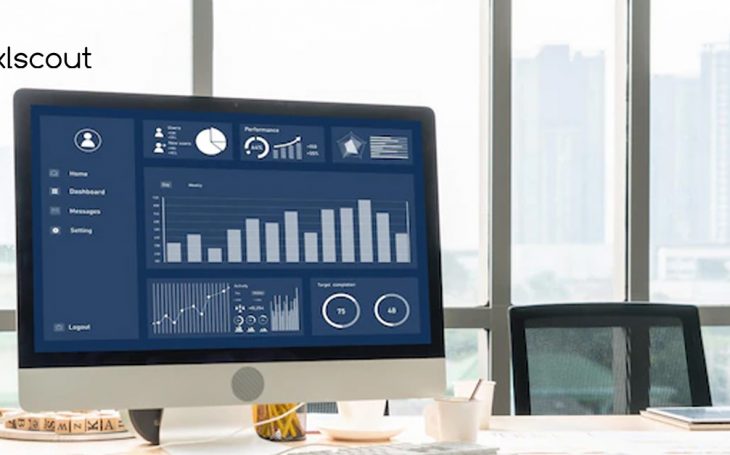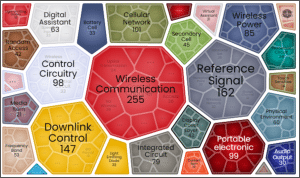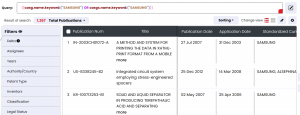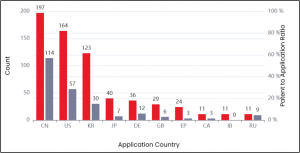
Up-to-date competitive intelligence is critical for strategic R&D, patenting, and marketing decisions. Data, not assumptions or intuition, should be used to make these decisions. However, without the right tools, the sheer amount of information surrounding your competitors’ intellectual property—which is extremely valuable to your organization’s decision makers—can be difficult to gain insight from. AI-powered visualizations unveil trends and insights that would be difficult to detect otherwise. Because of highly visual competitive landscape analysis, the C-suite can understand and act strategically within complex landscapes.
XLSCOUT‘s AI-powered Company Explorer offers robust visualization tools for competitive landscape analysis. Our AI engine is uniquely tailored to uncover and reveal insights directly from the intellectual property of your competitors.
Identify Innovation in Your Technological Field

Competitive landscape mapping necessitates the use of boundaries. Reviewing the technological landscape around your core competencies is one method to narrow the scope of your analysis. You can see which areas specific companies are most active in using highly visual semantic mapping, in addition to determining if any of your competitors’ patents seem to overlap your own—potentially indicating infringement. By identifying companies with inventions that are semantically similar to your own intellectual property, you can identify any new or non-traditional competitors.
Examine the white spaces in the landscape as well, or areas where just one or two competitors are patenting. This could indicate untapped industry potential where you could be first to market and gain a competitive advantage.
Examine the Intellectual Property of Competitors

You are well aware of your main competitors. Analyzing the technological landscape, on the other hand, may have brought to your attention additional organizations innovating in your space. You may also find that your competitors’ technology has been licensed or sold to another entity, or that they are innovating in a field other than your own. You can now examine the IP activities of both your direct competitors and secondary and tertiary competitors. This is also an excellent time to consider what innovations your idealistic competitors are releasing.
By including subsidiaries, acquisitions, and close variations of the company’s name in your analysis, the Corporate Tree feature enables you to include more of your competitor’s IP in your analysis. This in-depth examination can provide you with a better understanding of how and where your competitors are securing IP rights, as well as how their strategies are evolving over time.

Discover Trends by Country or Region

Visualizing activity in your industry, particularly that of your closest competitors, by country can provide valuable insight into what is to come. In a global economy affected by geopolitical unrest and a pandemic, companies must carefully consider where they’re patenting. Recognizing trends across time and regions can assist you in navigating international markets. This competitive landscape analysis can also identify foreign firms publishing IP similar to yours in your native country.
Our Methodology
Using XLSCOUT’s competitive intelligence platform (Company Explorer) you can qualitatively analyze a competitor’s patent portfolio to help you gain solid information for competitive leverage. A statistical process, advanced patent analytics, and a semantic search engine effectively identify the quality of intellectual assets.
The report generated from the analysis can act as a supplement to your expertise. It provides you with new actionable perspectives on intellectual property, patent competition, the marketplace, and other topics.

